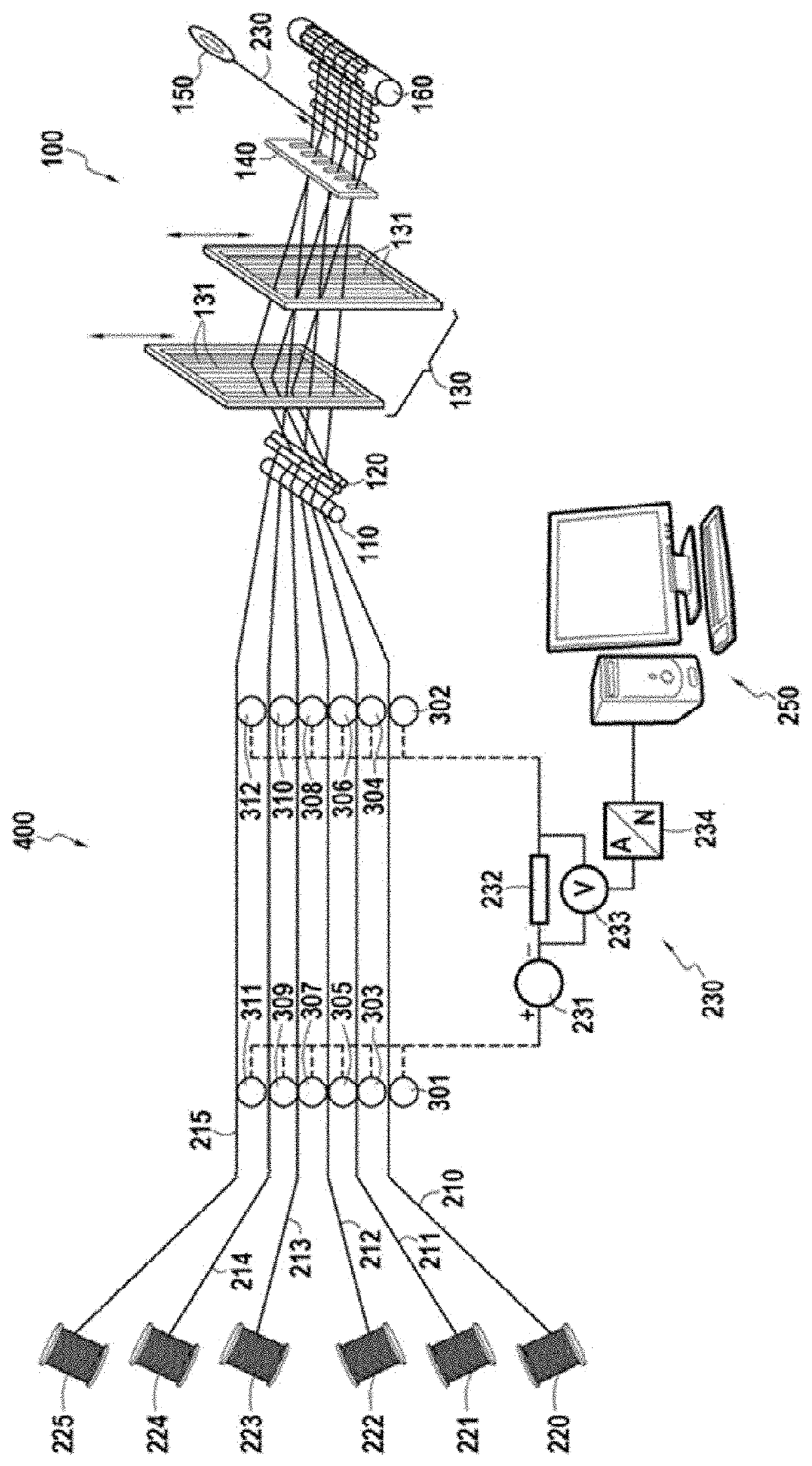Control of the positioning and continuity of threads in a loom
a technology of positioning continuity and loom, which is applied in the field of looms, can solve the problems of high number of carbon threads to be placed, high labor intensity of warp preparation, and high cost of operation
- Summary
- Abstract
- Description
- Claims
- Application Information
AI Technical Summary
Benefits of technology
Problems solved by technology
Method used
Image
Examples
Embodiment Construction
[0019]The invention applies generally to looms used to produce fibrous textures with carbon fiber threads, the threads being stored upstream of a loom in bobbins and unwound to the loom exit. The invention applies in particular to Jacquard-type looms used in particular to produce fibrous textures or fabrics by two-dimensional (2D) and three-dimensional (3D) or multilayer weaving between layers of warp threads and layers of weft threads.
[0020]FIG. 1 shows very schematically a weaving installation 400 according to an embodiment of the invention. The weaving installation 300 comprises a loom 100 warp-fed with carbon threads (threads composed of carbon fibers). For the sake of clarity, FIG. 1 illustrates only 6 carbon warp threads 210 to 215 each stored on 6 bobbins 220 to 225, respectively. The bobbins are stored in a rack, also called a creel (not shown in FIG. 1). Conventionally, the loom 100 comprises, from upstream to downstream, a first beam 110, a rod or bar 120 (which can be rep...
PUM
 Login to View More
Login to View More Abstract
Description
Claims
Application Information
 Login to View More
Login to View More - R&D
- Intellectual Property
- Life Sciences
- Materials
- Tech Scout
- Unparalleled Data Quality
- Higher Quality Content
- 60% Fewer Hallucinations
Browse by: Latest US Patents, China's latest patents, Technical Efficacy Thesaurus, Application Domain, Technology Topic, Popular Technical Reports.
© 2025 PatSnap. All rights reserved.Legal|Privacy policy|Modern Slavery Act Transparency Statement|Sitemap|About US| Contact US: help@patsnap.com

